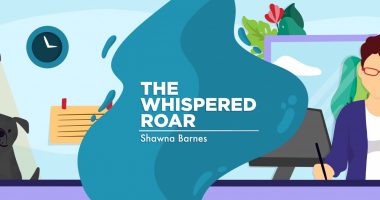DNTH103 for myasthenia gravis
Last updated Oct. 17, 2024, by Joana Carvalho, PhD

What is DNTH103 for myasthenia gravis?
DNTH103 is an investigational antibody-based therapy being developed by Dianthus Therapeutics to potentially ease disease symptoms in people with generalized myasthenia gravis (gMG).
It’s designed to reduce the activation of the complement system, a part of the immune system thought to be implicated in the autoimmune attacks in gMG.
Now in Phase 2 clinical testing for gMG, the therapy is given via injections under the skin, or subcutaneously, that can be self-administered by patients as infrequently as once every two weeks.
DNTH103 is also being investigated as a potential treatment for other complement-mediated diseases, including multifocal motor neuropathy and chronic inflammatory demyelinating polyneuropathy.
Therapy snapshot
| Treatment name: | DNTH103 |
| Administration: | Being tested in myasthenia gravis as subcutaneous injections |
| Clinical testing: | In Phase 2 clinical testing |
How does DNTH103 work in myasthenia gravis?
Myasthenia gravis (MG) is an autoimmune disease driven by self-reactive antibodies that erroneously attack proteins needed for nerve-muscle communication. In most cases, these autoantibodies target acetylcholine receptors (AChRs), which are on the surface of muscle cells and receive signals from nerve cells to tell the muscles to contract.
The complement cascade is a portion of the immune system composed of multiple proteins that are normally found in the bloodstream in an inactive state. The proteins typically become active in the presence of certain stimuli, such as an infection, to help defend the body from disease-causing microbes. But the binding of MG-causing antibodies to their target is also believed to promote complement activation, which contributes to damaging autoimmune responses.
The complement system can become active via three distinct pathways. In MG, disease-driving complement activation occurs mainly through the classical pathway.
DNTH103 is a long-acting monoclonal antibody that’s designed to inhibit the classical complement pathway by potently and selectively blocking the active form of a complement protein called C1s. Because the experimental therapy doesn’t block the other two complement pathways, it may help keep MG under control while preserving some degree of immune activity. This may reduce the risk of infection compared with medicines that block all complement pathways.
Engineered with the YTE half-life extension technology, DNTH103 contains a modification that allows it to remain active in the body for longer periods of time; its half-life is approximately 60 days. This means that it takes around two months for DNTH103 levels to drop to half of those originally administered which enables the therapy to be given less frequently and in lower doses that are more convenient for subcutaneous administration.
How will DNTH103 be administered in myasthenia gravis?
In a Phase 2 clinical trial involving people with gMG, DNTH103 is being administered as an initial intravenous, or into-the-vein, loading dose followed by subcutaneous injections every two weeks.
However, this trial is still testing different doses for the intravenous and subcutaneous injections, so it’s too early to know which will be selected for future studies. In addition, because DNTH103 is in development for the treatment of gMG, it’s also unknown if this dosing regimen will be used if the therapy is ultimately approved for this indication.
DNTH103 in myasthenia gravis clinical trials
The safety, tolerability, and pharmacological properties of DNTH103 were first evaluated in a Phase 1 clinical trial (ACTRN12622001265763) in New Zealand involving healthy volunteers. As of December 2023, 60 participants had completed dosing across eight different treatment groups, where individuals were randomly assigned to receive DNTH103 or a placebo.
Six groups received a single administration, including four groups in which DNTH103 was administered intravenously at a dose of 1, 10, 30, or 50 mg/kg, and two groups who received it subcutaneously at 300 or 600 mg. The remaining two groups received multiple subcutaneous injections, at a dose of 300 or 600 mg every two weeks.
Top-line data confirmed DNTH103’s extended 60-day half-life and the ability to strongly inhibit classical complement activation, supporting its development as a self-administered subcutaneous injection therapy given as infrequently as once every two weeks.
DNTH103 was also safe and well tolerated, with no serious adverse events or complement-related infections reported. Five participants experienced mild or moderate treatment-related adverse events, which included injection site reactions, infusion-related adverse events, vomiting, and the development of antinuclear antibodies that are commonly seen in people with lupus and other autoimmune conditions.
Ongoing trials
An ongoing Phase 2 clinical trial called MAGIC (NCT06282159) is evaluating DNTH103 in adults with gMG who are positive for self-reactive antibodies targeting AChR.
About 60 patients are expected to enroll and will be randomly assigned to receive either DNTH103 or placebo for 13 weeks, or about three months. At the start of treatment, patients will receive an intravenous loading dose containing 15 or 20 mg/kg DNTH103. This will be followed by 300 or 600 mg subcutaneous maintenance doses every two weeks, starting at day 7.
After completing the randomized part, the participants will be able to join an open-label extension phase, where all will receive DNTH103 for up to 52 weeks, or about a year.
The trial’s main goal is to determine the treatment’s safety, as assessed by the incidence and severity of adverse events, as well as changes in clinical laboratory parameters and heart function. Changes in measures of MG severity, including the patient-reported MG Activities of Daily Living and the clinician-reported Quantitative MG scales, will also be assessed over 13 weeks as secondary efficacy goals.
Top-line data is anticipated in the second half of 2025 and the trial is expected to conclude in 2027.

Common side effects of DNTH103
Clinical trials investigating DNTH103 in people with gMG are still ongoing and no results have been reported to date, so the therapy’s side effect profile in this patient population remains unknown.
Myasthenia Gravis News is strictly a news and information website about the disease. It does not provide medical advice, diagnosis, or treatment. This content is not intended to be a substitute for professional medical advice, diagnosis, or treatment. Always seek the advice of your physician or other qualified health provider with any questions you may have regarding a medical condition. Never disregard professional medical advice or delay in seeking it because of something you have read on this website.
Recent Posts
- Polyautoimmunity brings some uninvited guests to my MG party
- FDA approves inebilizumab, now Uplizna, to treat adults with gMG
- Getting a generalized MG diagnosis can take more than 2 years: Study
- Reexamining doctor-patient relationships with more compassion
- Foundation creates digital guide to decode medical jargon in MG
Related articles





